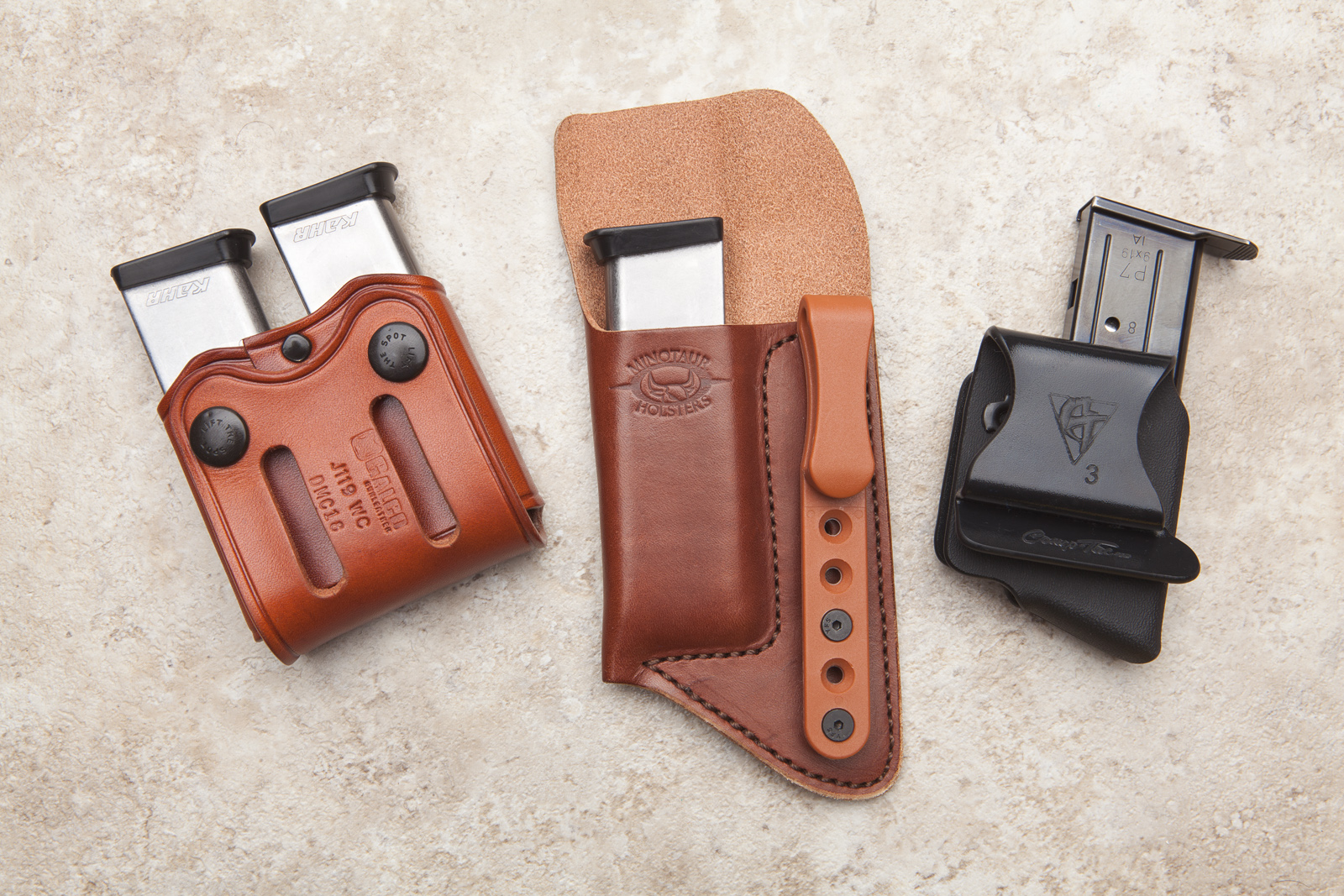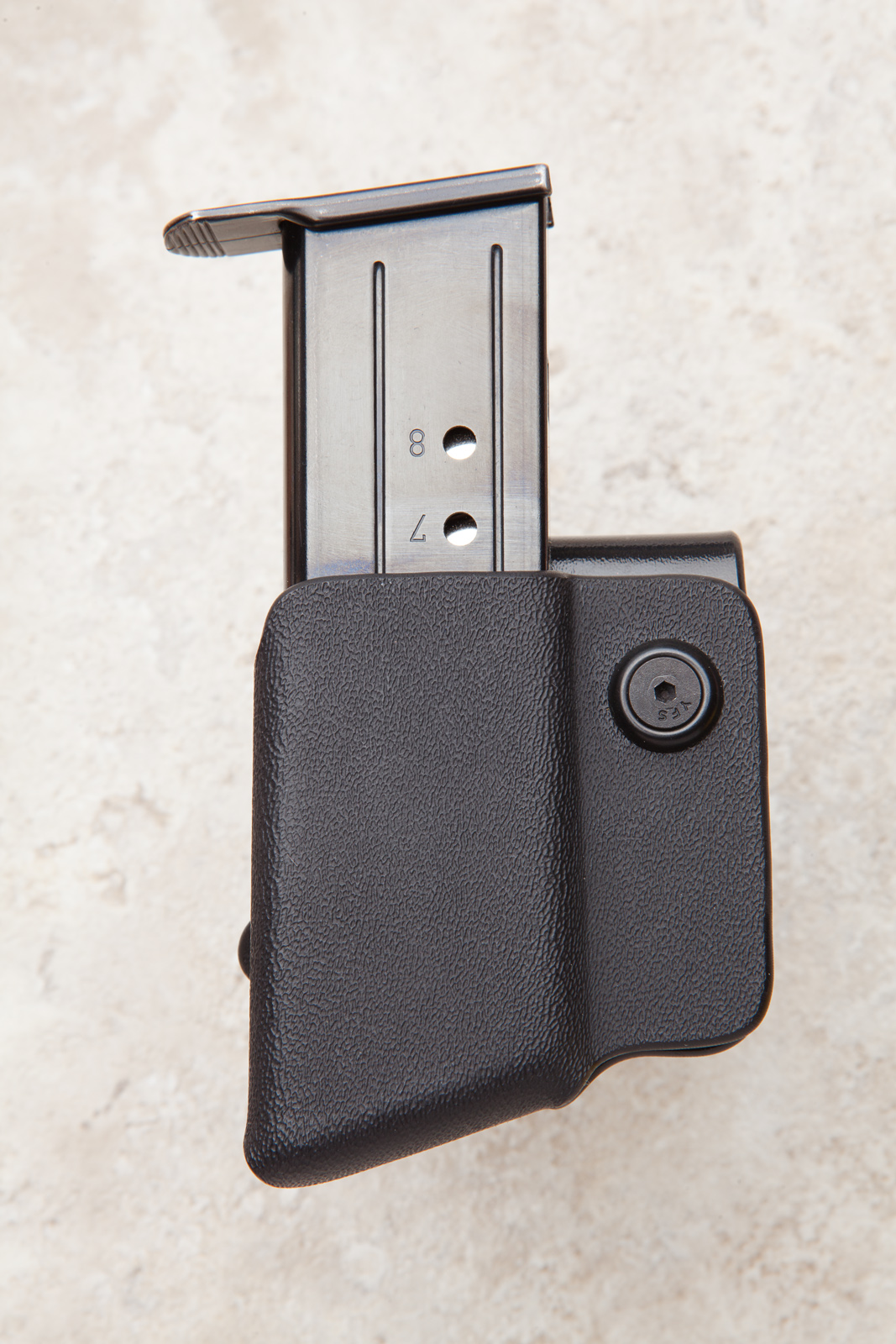I happened to have two examples of LCP-compatible lasers on hand. Pistols with fixed sights of indifferent visibility definitely benefit from lasers for low-light use. I have seen more than one person go from 8 inch scatter to a tight 2 inch group with laser-sighted P3AT and LCP.
Viridian Reactor R5 is a green laser for LCP or LC9 and has considerable daylight visibility. With batteries, it adds under an ounce to the weight. Production units are days away and will retail for about $176.


Several holsters are available, such as this Springtach universal IWB.


However, Viridian’s own holster has an extra feature (ECR) — it turns out the laser automatically when the pistol is unholstered. Manual on/off switch also works. Below, ECR-capable holsters are shown with Ruger LC9 and M&P Shield. A holster adds just $24 to the price of the laser when bought with it.


A cheaper red laser alternative, not as bright and without automatic switching, is already available from Lasermax. The on/off switch is an ambidextrous cross bolt. Being red, this laser is for low light situations only.


Both devices appear to be of good build quality and both were easy to zero.









































